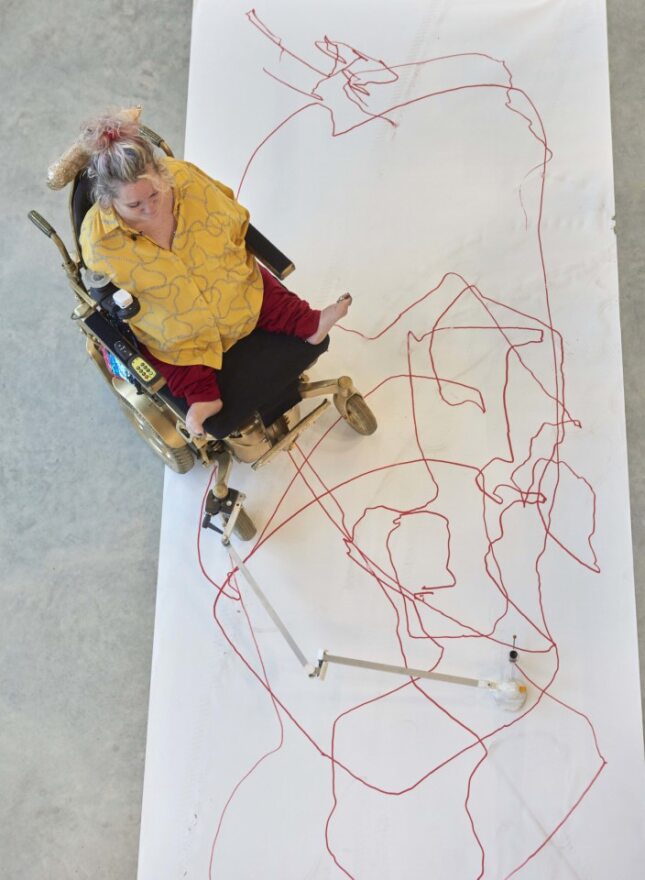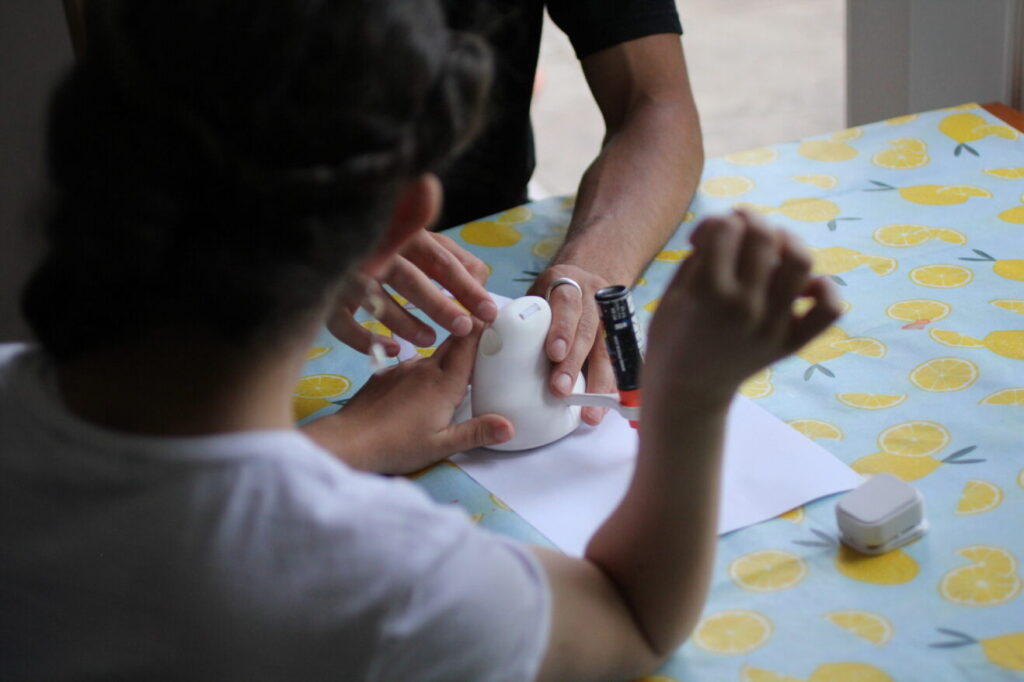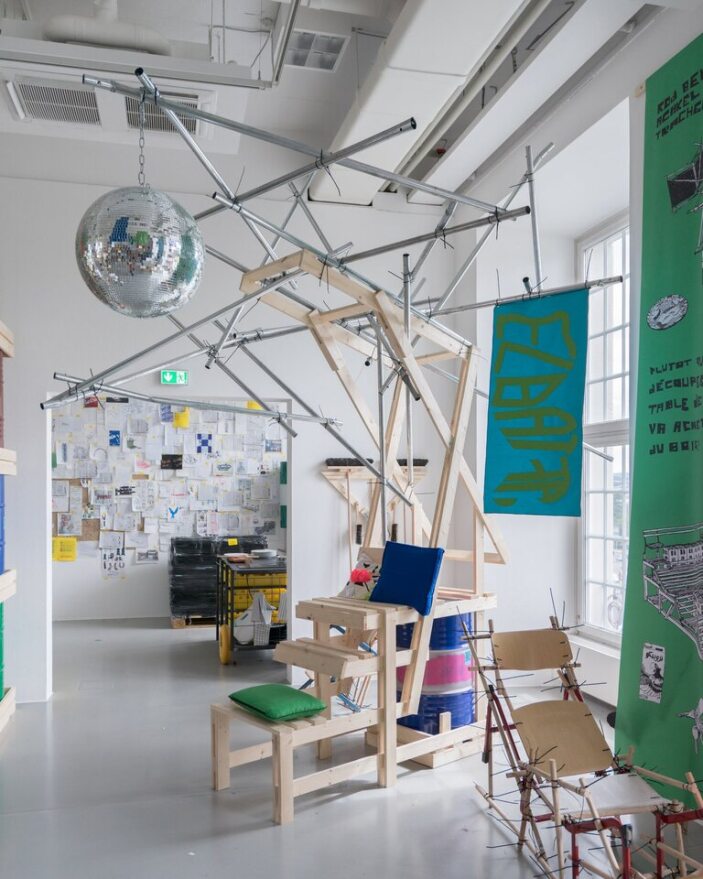This autumn, Somerset House explores the possibilities of design and invention for radical social and environmental change in a new exhibition, Makerversity: Designing for the Real World. Curated by Paul Smyth, Director and Co-Founder of the Somerset House based community of designers, Makerversity, and one half of artistic duo Something & Son, the interactive exhibition featuring a live workshop space, will give a behind-the-scenes into the world of innovative creative design.
Blending disciplines and new technology with traditional methods, the show looks to the future of design and how we can make a better world. The exhibition will showcase works of design from initial ideation and prototyping to the making process and real-life application in areas as diverse as pollution reduction, sustainable materials, accessibility, robotics and more. At the heart of the exhibition is Makerversity’s ethos of designing and inventing with a social purpose, aiming to solve problems in the present to create a better way to live in the future. The exhibition takes its name – ‘designing for the real world’ – from the 1971 book of the same name by educator and designer Victor Papanek. This groundbreaking text shows how socially and ecologically responsible design can radically disrupt the status quo and make a real impact on the way we live, ideals that are central to the purpose of Makerversity.

The exhibition also marks the ten-year anniversary of Makerversity, one of Somerset House’s first creative residents and a pioneering community of over 300 creatives working at the intersection of design, engineering and digital practice, developing ground-breaking solutions for the world’s biggest societal challenges, including climate change, health and inequality. Over 30 contributors, including current residents and alumni, will take visitors on a journey through the process of bringing creative solutions from the Makerversity lab and workshop in Somerset House to life.
The exhibition will open by showcasing prototypes – either in progress or as examples of early-stage designs gathered in an open-call to the Makerversity community. Early test-concepts of now successful works of design will be presented alongside documentation of the design process, in an ode to the essential role that trial-and-error plays in developing solutions to the challenges facing the world today. Contributors include The Tyre Collective, who use electrostatics and airflow to reduce microplastics created by tyre wear; Samudra, who have created a water monitoring device for seaweed farmers; Enayball, a tool that allows anyone in a wheelchair to independently create large scale drawings, and AMPHIBIO, a 3D printed amphibious garment which functions as a gill designed for a future where humankind lives underwater.

The second part of the exhibition will introduce audiences to the workshop environment through the Workshop of the Future – a live project space fitted with state-of-the-art machinery where new innovations will be created for the first time in front of visitors. This space will show how workshops and making have adapted to new technologies, subverting traditional ideas about what a workshop should be. Led by Makerversity member Rickie Cheuk and Paul Smyth, with a rotating group of makers joining them throughout the course of the exhibition, the workshop will demonstrate the hugely varied making processes that find their home in Makerversity. Cheuk, an artisan whose practice explores peculiar ways of making, particularly through ‘circular design’ (producing objects using waste materials from different industries), will collaborate with other Makerversity residents whose expertise span AI, biomaterials, robotics and beyond. After the closing of the exhibition, the experimental works and equipment will become a resource for the whole of Makerversity, continuing the legacy of the show within the community.
The final section of the exhibition will show a series of short films to spotlight projects that began in Makerversity, now scaled up and solving problems in the real world. Films will spotlight projects including EL Warcha (Arabic for workshop), a collective founded in 2016 in Tunisia that aims to promote hands-on education and civic actions through the making of temporary urban furniture, art installations and public events with local inhabitants. This space will feature custom designed furniture by Makerversity members, as well as a reading area where visitors can view materials that inspired the exhibition’s contributors to get involved in making.

Paul Smyth states: “Makerversity has been at the forefront of the maker movement since it opened at Somerset House 10 years ago. Our shared lab spaces and workshops put cutting edge tools and industrial processes into the hands of small businesses and designers without the means to access them as individuals. Part of what is sometimes called the fourth industrial revolution – the new era that builds and extends the impact of digitization in new and unanticipated ways – we have been part of bringing the life changing power of making back into the hands of millions of people, leading to a resurgence in the role of design, inventing and creating the tools for a better world.
When finding a home in 2013 we were thrilled to find Somerset House with a mission to bring the best creative minds back into the centre of London. Makerversity has grown alongside the introduction of artist studios and creative workspaces, that make Somerset House today the home of cultural innovators, transforming this historical building into a powerful force for change – where makers, engineers, designers, artists and creators are joining forces to unleash new waves of creative and innovative practice.”

FURTHER CONTRIBUTORS
Ambessa Play– Design STEM educational kits, crafting tools that ignite curiosity, creativity, and confidence.
Anne Ferial – 3D and fashion designer focused on wearable tech design and adaptivewear.
Beakbook – Harvest prediction for ethical, sustainable farming.
Bramwell Brown Clocks – Makers of bespoke tide and weather clocks.
Cargo Collective – A ongoing project by multidisciplinary designer, dreamer and thinker Candyce Dryburgh, whose design work is centered around projecting and speculating worlds through the lens of science, science fiction and technology, both past and present.
Circle Instruments – Makers of the ‘Circle Guitar’ a new form of electric guitar that uses mechanics to generate new sounds, textures and rhythms.
CQ Studio – Take waste from fashion, food and agriculture industries to transform into new innovative materials to be used in the textile industry.
Humanising Autonomy – Software that analyses videos to quickly classify, interpret, and predict human behaviour so that it can better inform automated decision-making engines.
Lily Mccraith – Designer, researcher and artist who work investigates systems, infrastructures and ecologies via active methods of research, enquiry and collaboration.
Luke Hale – Surgical trainee Doctor and multi-disciplinary designer who founded Pi-A (pi-a.io), a design and technology company working in medicine, and is the creator of Lungy, an app which guides users through breathing exercises.
Make Your Own Masters – A creative learning movement looking to tackle the ‘drop off’ between university and industry for those from less advantaged backgrounds.
Malou van der Veld – Multidisciplinary designer unpacking emerging technologies and the impact on our future societies from a non-anthropocentric view.
Matt DesLauriers – Artist whose practice primarily focuses on code, software, and generative processes.
Mentis – Create kits for people to grow mushrooms themselves at home.
Modern Synthesis – Use biotechnology to produce materials that are circular by nature, and customisable by design.
Modernsynthesis – Uses microbial materials to mimic a wide range of natural materials, unlocking incredible potential for designers around the world.
Notpla – All-natural packaging solutions made from seaweed and plants that are naturally biodegradable and home-compostable.
Polyfloss Factory – A machine inspired by the principle of candy floss making, to recycle plastic.
Richard Adetokunbo Aina – Multidisciplinary designer and researcher whose work explores amalgam typologies and contemporary West African aesthetic expression through spatial design, architectural writing, furniture craft and conceptual filmmaking.
SafetyNet Technologies – Underwater cameras and LED lights that enable Precision Fishing to help fishermen improve the efficiency and sustainability of their gear.
Saltyco – Makes textiles from plants that heal damaged wetlands.
Samphire Neuroscience – Uses at home neuromodulation therapy to alleviate period symptoms.
Samudra – Designs swarms of monitoring robots equipped with sensors and cameras that can detect pathogens, nutrients and acidity in biomass environments such as seaweed.
Shellworks – Compostable packaging is made up of micro-organisms that will leave no trace.
Studio Scarlett Yang – Sustainable design, biomateriality and virtual materials, focusing on new material developments and the supply chain.
Tone Product Design Ltd – Product design agency who work across healthcare, consumer and industrial design.
Full events and digital programme to be announced, alongside an interactive workshop programme for entry level young creatives led by current Makerversity members as part of Somerset House’s Inclusive Talent Engagement programme.
The exhibition is supported by The Kusuma Trust.



